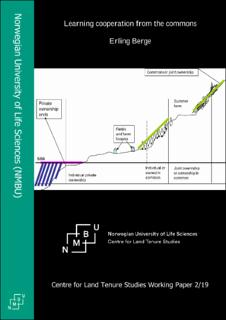Seoul, a city in South Korea, experiences high particulate matter (PM) levels well above the recommended standards suggested by the World Health Organization. As concerns about public health and everyday lives are being raised, this study investigates the effects of land use on PM levels in…
The Prairie Pothole Region (PPR) is a biotically important region of grassland, wetland, and cropland that traverses the Canada-US border. Significant amounts of grasslands and wetlands within the PPR have been converted to croplands in recent years due to increasing demand for biofuels. We…
Residents of rural areas live and depend on the land; hence, rural land plays a central role in the human–land relationship. The environment has the greatest direct impact on farmers’ lives and productivity. In recent years, the Chinese government carried out vigorous rural construction under a…
Women are an underappreciated economic force who, when empowered by association with a female organization, can be a catalyst for development. To assess the status of Indigenous rural women, as well as the mechanisms and impacts of their empowerment, this paper presents a case study of a…
Assessment of multiple land use functions promotes both utilization efficiency of land and regional coordination. Different personal and public products and services are offered by various land use types, meaning their functionality varies. Lack of judgment on temporal trends, turning points, or…
Land ownership shapes natural resource management and social-ecological resilience, but the factors determining ownership norms in human societies remain unclear. Here we conduct a global empirical test of long-standing theories from ecology, economics, and anthropology regarding potential…
Understanding stakeholder power relations—such as between land sellers, land buyers, and local governments—is crucial to understanding Land Value Capture (LVC). While scholars have focused on stakeholder relationships through approaches such as stakeholder salience, stakeholder interaction,…
Land use and land cover change (LULCC) affects the climate through both biogeochemical (BGC) and biophysical (BPH) mechanisms. While BGC effects are assessed at global scale and are at the heart of climate treaties such as the Paris Agreement, BPH effects are totally absent despite their…
In Norway, 84% of the productive forest is privately owned, and these forests dominate the supply of timber to industries. However, during last 80 years, annual forest growth has seen a substantial upsurge while annual timber harvest has been rather stable, generating an increasing potential for…
The municipality of Bergen in Norway aims to densify fifty per cent of new housing within the city’s central parts. The Ministry of Local Government and Modernisation ordered and financed an investigation to be carried out by the Western Norway University of Applied Sciences and the consulting…
The paper discusses the link between commons as they might have been used in
prehistoric Norway and the rules concerning the exploitation of the commons as
found in the oldest known legislation for regions of Norway, Gulating Law and
Frostating Law. One clear social dilemma has…
Recent studies assessing agricultural policies, including the EU’s Agri-Environment Scheme, have shown that these have been successful in attaining some environmental goals. In Finland, however, the economic situation of farms has dramatically fallen and hence, the actions do not result in…







